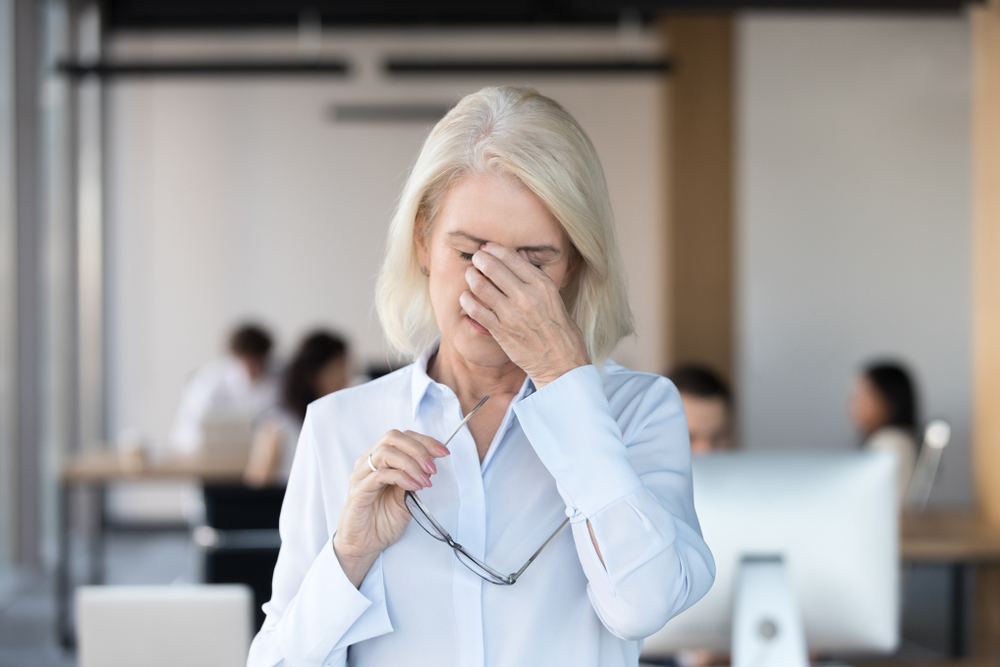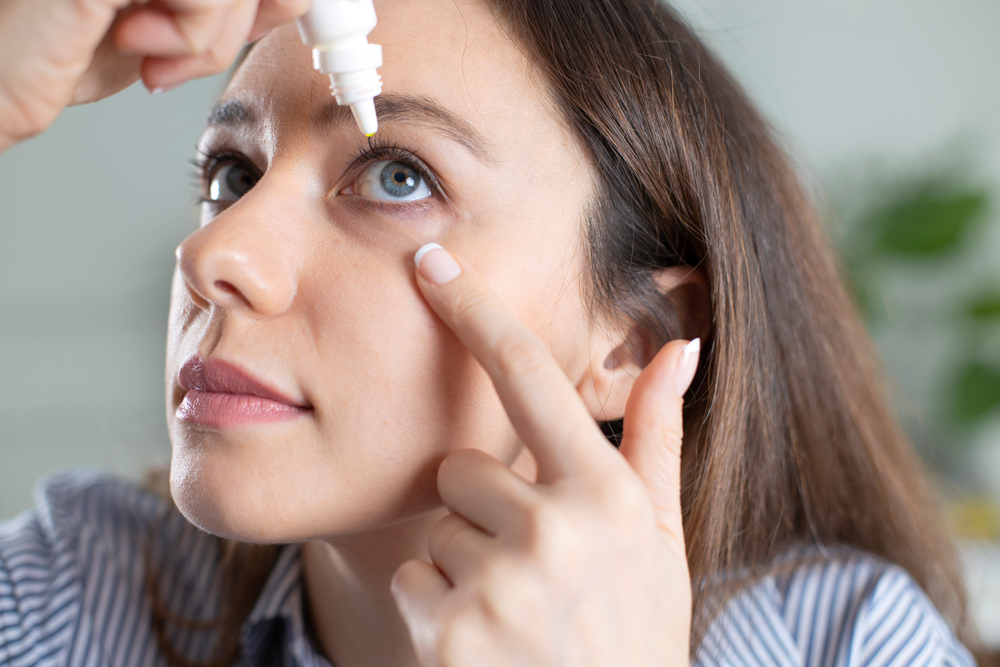Can Dry Eye Symptoms Come and Go?
March 27, 2024
If you struggle with dry eye disease, you are probably accustomed to the sudden onset of symptoms it can cause. All at once, your eyes may feel gritty and itchy. They may look red or puffy, as well.
These sudden flare-ups are typical of dry eye disease. Certain activities, weather conditions, or exposure to allergens can trigger a flare-up of dry eyes.
Your eye doctor can help you understand what causes dry eye disease and how to reduce the number of flare-ups you have. Keep reading to learn more about dry eyes, including what causes symptoms to come and go!
What Is Dry Eye Disease?
Dry eye disease is more than just the occasional episode of dry eyes. It’s a chronic condition caused by problems with the tear film of your eyes.
The tear film is made up of three layers: an oil layer, a water layer, and a mucus layer. These three layers of tears protect the surface of your eyes, among many other functions.
Any disruption of the tear film can lead to symptoms of dry eye. All types of dry eye disease are long-term conditions, though you may not experience symptoms all the time.
Instead, you’ll have periodic flare-ups of symptoms. There are several different types of dry eye disease:
Aqueous Deficient Dry Eye
Your eyes don’t produce enough aqueous tears from the lacrimal gland. This leads to a lack of sufficient tear film volume on the surface of the eyes.
Evaporative Dry Eye
Those with evaporative dry eye have tears that evaporate too quickly. This is usually because of issues with the meibomian gland, which produces the outer, oily layer of tears.
Without enough of these tears, the watery layer of tears evaporates too quickly.
Mixed Dry Eye
With mixed dry eyes, there are insufficient aqueous tears and not enough oily film present to prevent evaporation. This combination leads to rapid tear film break-up.
People with mixed dry eyes often experience irritation, burning, redness, blurred vision that fluctuates, and sensitivity to smoke or wind.
Are you experiencing symptoms of dry eye?
What Are the Symptoms of Dry Eye Disease?
When you have flare-ups of dry eye disease, you may notice symptoms including:
- Burning, itching, or stinging
- Light sensitivity
- Blurry vision or changed vision
- Mucus that comes out of your eye
- Very watery eyes, with excess tears running down your cheeks
What Causes Dry Eye Flare-Ups?
There are a lot of things that can trigger a flare-up of dry eyes, including:
- Air conditioning
- Wind
- Exposure to low air humidity, such as a long airplane ride
- Uninterrupted screen time
- Prolonged contact lens wear
- Seasonal allergies
- Eye surgery
Dry eyes can be related to other health issues. Certain medications, including those that treat depression, allergies, blood pressure, glaucoma, and chronic pain, can increase the risk of developing dry eyes.
Underlying neurological conditions, eye conditions, autoimmune conditions, and endocrine conditions can also raise your risk of dry eye disease. Dry eye symptoms may increase as you get older.
If you notice new or worsening flare-ups of dry eye symptoms, you should talk to your eye doctor. They may suggest you also see your primary care provider to address any additional health issues that might be affecting your eyes.
Managing Dry Eye Flare-Ups at Home
When you experience a flare-up of dry eye symptoms, you might be able to use some at-home methods to ease the discomfort and improve your symptoms.
Warm compress
You can use a washcloth soaked in warm water or use a heat mask for your eyes as a warm compress. Leave the compress on your eyes for ten minutes.
This can ease symptoms and allow your meibomian glands to produce more lipids to replace the oil layer of tears.
 Rest Your Eyes
Rest Your Eyes
Using screens can irritate the eyes, especially because you may not blink enough when using a computer or other device. Take frequent breaks and practice the 20/20/20 rule.
Every 20 minutes, stop and focus your eyes on something 20 feet away for 20 seconds.
Take Omega-3 Fatty Acid Supplements
Omega-3 fatty acid supplements may support tear production and reduce dry eye symptoms. Talk to your eye doctor or primary care provider before taking any supplements.
Artificial tears
Artificial tears are over-the-counter eye drops that lubricate and soothe your eyes. Your eye doctor can recommend the best brand for your needs.
Artificial tears will temporarily relieve symptoms but can’t replace prescription eye drops that your eye doctor may give you to treat the underlying causes of dry eye disease.
Are you experiencing symptoms of dry eye?
When to Call Your Eye Doctor About Dry Eyes
If you have frequent flare-ups or your dry eye symptoms seem to be getting worse, you should talk to your eye doctor. You may need treatment for the underlying cause of dry eye.
Your eye doctor may suggest prescription eye drops that reduce inflammation and soothe dry eye symptoms. They might also prescribe eye drops or stimulate increased tear production.
In some cases, blocking off tear ducts can help keep tears on the surface of the eye longer. It’s important to treat dry eye disease and prevent flare-ups as much as possible.
Untreated dry eye disease can increase your risk of eye infections, cause damage to the surface of the eye, or create lasting vision problems.
Are you experiencing symptoms of dry eye? Schedule an appointment at the Center for Total Eye Care in Westminster or Eldersburg, MD, today!



